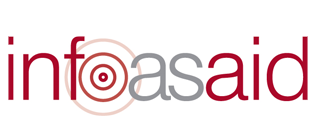Internews and the BBC World Service Trust are partners in a DfID funded consortium focusing on improving how aid agencies communicate with disaster affected communities. The emphasis is on the need to deliver information, as aid itself, through the most appropriate channels ...more
How Historical Fact-Checking Uses Primary Sources
When you fact-check history, you'll often turn to primary sources like letters, diaries, and original reports. These firsthand records let you judge what actually happened instead of relying on secondhand stories. But simply having an old document isn't enough. If you want to avoid common pitfalls and make your research truly reliable, you'll need to know how to use these sources the right way—let's see where the challenges and opportunities begin.
Understanding Primary Sources and Their Role in Historical Research
To gain a comprehensive understanding of history, it's essential to engage directly with primary sources, which are original documents or artifacts from the period in question. Examples of primary sources include letters, photographs, diaries, and official records.
Analyzing these materials allows researchers to access the foundational elements of historical events. When using primary sources, it's important to consider their historical context, purpose, and intended audience. Understanding whether a document serves a prescriptive role, suggesting how things ought to be, or a descriptive role, reporting on what's occurred, is crucial for accurately interpreting its significance.
This approach helps to clarify the document's contribution to historical narratives. By analyzing a range of primary sources, researchers can construct a more nuanced understanding of the past. This method provides insights that may be overlooked in secondary accounts, which often rely on interpretations and generalizations.
Through careful examination of primary materials, one can attain a deeper grasp of historical complexities and the factors that shaped events.
Assessing Credibility and Bias in Firsthand Accounts
To evaluate whether a firsthand account provides a comprehensive view or is limited to the author's perspective, it's important to analyze several key factors.
First, identify the creator of the account and consider their background, as their personal experiences and social positions may influence their reporting.
Next, examine the creation date of the account, as understanding the historical context can provide insights into the circumstances surrounding the narrative.
Additionally, consider the purpose of the account: was it intended to persuade, inform, or serve another function? The intended audience also plays a crucial role; knowing who the account was meant for can help clarify how the information may be presented or framed.
By systematically applying these analytical steps, one can better assess the credibility and potential biases inherent in firsthand accounts.
This approach promotes a more thoughtful evaluation of primary sources, aiding in a more nuanced understanding of historical narratives.
Cross-Referencing Multiple Sources for Accuracy
When cross-referencing multiple sources, it's essential to develop a more accurate understanding of historical events by analyzing various perspectives. Researching in libraries or archives can yield an assortment of primary sources, such as letters, diaries, photographs, newspaper articles, and government records, each offering distinct viewpoints.
By comparing eyewitness accounts with official documentation, researchers may identify discrepancies and verify factual information. Corroborating evidence enhances the credibility of historical claims, while identified contradictions necessitate further investigation.
It's important to evaluate the reliability of each source and ensure that details are consistent with the relevant temporal and spatial contexts. This methodical approach aids in minimizing bias and misinterpretation, contributing to a more nuanced narrative of historical events.
Analyzing Context and Authorship for Deeper Insight
To understand why a primary source conveys its particular message, it's essential to analyze both the historical context and the authorship behind it. This involves examining the social, political, and cultural factors that influenced the period during which the source was created.
The creator's background, motivations, and intended audience play significant roles in shaping the source's message and may introduce certain biases.
It is also important to assess the physical characteristics of the source, including its format, any annotations, and its overall condition, as these elements can indicate its purpose and relevance in a historical context.
Comparing this primary source with other contemporary documents allows for the identification of varying perspectives, which can provide a more nuanced understanding of the issues at hand.
Through such critical evaluation, a clearer interpretation of the significance of a primary source can emerge, contributing to a more comprehensive understanding of historical events.
Tools and Resources for Locating Reliable Primary Documents
Finding reliable primary documents for historical research involves utilizing various tools and resources effectively. Important starting points include digital collections from the Library of Congress and the National Archives, which offer a range of digitized materials such as letters, photographs, and government records.
Additionally, specialized databases like JSTOR and ProQuest provide access to historical newspapers, which can be crucial for understanding contemporary perspectives on events. Professional organizations, such as the American Library Association and the American Historical Association, provide guidelines on how to evaluate the credibility and relevance of sources.
It's also advisable to explore archives and museums that curate collections, as they may house unique primary documents not available elsewhere. Furthermore, educational resources like History Matters can offer practical tips for refining search strategies and improving interpretation skills.
Conclusion
When you rely on primary sources for historical fact-checking, you’re digging right into the heart of the past. By checking credibility, spotting biases, and investigating context, you’ll get a clearer, more balanced picture of what really happened. Cross-referencing multiple firsthand accounts lets you confirm facts and challenge questionable narratives. With the right tools, you can find reliable documents and strengthen your research, making your understanding of history both accurate and insightful.



